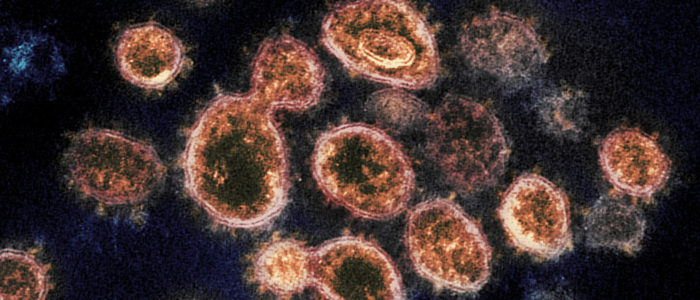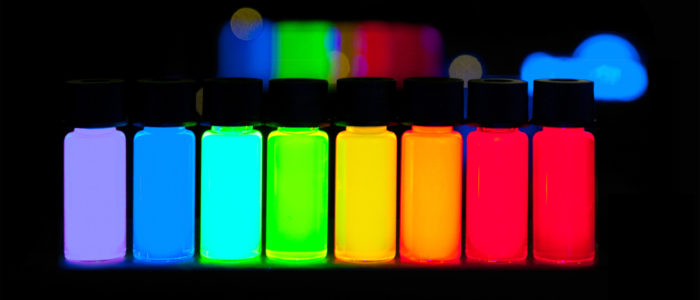Note: This post has been marked PP for potentially political. Distilling Science strives to avoid political commentary, erring on the side of presenting facts while displaying exciting science. Read more about our policy on political commentary.
The year is 1730. You are an Englishman, living in London. You wear long, classy black coats and speak in a thick British accent. And 60% of your fellow Brits, including you, your friends, and your family, have experienced the hell known as “smallpox.” God save the queen!

As you walk the streets of London, you see many faces scarred with blisters from the experience. You count yourself lucky to be able to see their faces at all, since the disease leaves many of its victims blind. That is, the ones who survive.
Smallpox possesses a mortality rate of about 30%. In children, that number is more like 80%.
In the 18th century, 10% of all deaths were caused by smallpox. In urban areas, that number would rise to about 20%.
In this blogger’s opinion, humanity’s greatest quality is its ability to overcome adversity imposed by the natural world. When threatened, we survive, fight back, and learn to exert order over hazardous or unfamiliar environments.

Smallpox was a scourge spanning the entirety of human existence. And we eradicated it.
In 1977, the last recorded case of smallpox was extinguished.
How did we accomplish this mighty feat? You may already know the answer, but let’s take a trip down memory lane anyway.
Jump Ahead!
Author’s Note: This post is quite long, so feel free to skip ahead to the topics that interest you!
Table of Contents
Edward Jenner's Cow Pus Vaccine

The tide of humanity’s battle against deadly disease was turned by the insights of Edward Jenner. Jenner, an English physician and scientist, is considered the father of modern immunology. His world-changing idea began with a simple observation: milkmaids almost never catch smallpox.
Jenner launched some experiments that, if announced today, ~may~ have crossed some ethical boundaries. He squeezed some pus from cowpox blisters and rubbed the pus into the arms of James Phipps, the eight-year old son of his gardener.
The Phipps boy caught a minor fever, but nothing too serious.

Jenner then exposed Phipps to the smallpox virus. No infection ensued. Additional exposure to smallpox scabs and pus showed that the boy had developed an immunity.
Jenner repeated this trial with 23 other subjects, including his 11-month old son. He then reported his findings to the Royal Society of Medicine. Smallpox immunization via cowpox came to be known as “vaccination.”
Vaccination was an instant game changer for the disease-ravaged populations of the 18th century. The practice was implemented across Europe, drastically reducing smallpox mortality rates. Famously, Napoleon (yes, THAT Napoleon) invited Jenner to teach the French about vaccination despite being at war with the British at the time. At Jenner’s request, Napoleon released two British hostages, saying he “could not refuse anything to one of the greatest benefactors of mankind.”
Jenner gained widespread fame for his achievements. His work is said to have saved more lives than any other human.

How Does Vaccination Work?
All vaccines function on the same basic premise: immunological memory. Memory acquisition begins via the introduction of an antigen, a foreign invader recognized by the body.
Antigen introduction triggers a process called clonal expansion. This process creates new white blood cells that will: (1) eradicate the threat, and (2) stockpile defenses against the threat in case it returns in the future [1].
The process of cell-mediated clonal expansion is shown below. In this process, helper T-cells bind to a foreign antigen via an antigen-presenting cell. These helper T-cells are specialized white blood cells that serve as the “alarm bells” of the immune system. If the body detects a foreign invader, helper T-cells carry the message, ensuring the body’s defenses are ready to address the threat.

When the helper T-cell binds to an antigen, it divides, or “expands” into effector cells and memory cells. Effector cells stimulate the production of antibodies, which may bind to the target antigen and mark it for disposal. This disposal often occurs via phagocytosis, also known as “cells eating other cells.”
Clonal expansion may also occur in the bloodstream. To identify blood-born antigens, a helper T-cell must enlist the aid of a B cell, another type of white blood cell that can bind with antigens within the bloodstream. This process is known as the humoral immune response. Aside from the inclusion of a B cell for identification, clonal expansion proceeds in much the same way in both the humoral and cell-mediated immune systems [1].
Antigen binding is highly specific. Helper T-cells contain specific functional groups that pair with the epitope, or binding site, of an antigen molecule. This specificity allows for the production of antibodies that target a single antigen without harming any other molecules in the body.
The Power of Immune Memory
Memory cells are the secret ingredient that allows immunization to work. These cells, which are encoded with the antigen-specific antibodies produced in effector cells, remain in the lymphatic system long after the infection passes. If the pathogen ever presents itself again, hosts of memory cells will activate and rapidly destroy the recurrent invader.
Memory cells are always on the prowl, and can stay in your bloodstream for decades. If you’re up to date on your vaccinations, then at this very moment, your body’s memory cells remain vigilant for pathogens like measles or polio.

Keep in mind that this description is a very basic understanding of the responses elucidated by vaccines. More recently developed vaccines can trigger more multifaceted responses, including predisposition towards certain signaling pathways, synthesis of specific types of antibodies, or the generation of cytotoxic “killer” T cells.
No matter how complicated they get, the goal of all vaccines will remain the same. Universally, vaccines will work through the immune system to produce memory cells. These cells in turn will defend their host against pathogens, keeping them happy and healthy.
Types of Vaccines

Many types of vaccines exist, but they all work because of the previously described principles of acquired immunity and immunological memory. Vaccines mainly differ in the way they present the antigen for binding.
Attenuated vaccines consist of an altered but living form of the pathogen to be defended against. Jenner’s original smallpox vaccine was an attenuated vaccine, since it was a living form of the cowpox virus. The cowpox virus and the smallpox virus shared a particular antigen; once the body produced antibodies against cowpox, it could also effectively defend against smallpox.
Attenuated vaccines confer immunity very effectively. Normally, only a single dose of an attenuated vaccine is required to give a patient complete immunity to the target pathogen. However, the use of live virus confers inherent safety risks. Patients with a weakened immune system may react negatively to attenuated vaccines. On rare occasions, the pathogen may mutate into an active form, causing a reaction. This process depends on the pathogen in question and method of deactivation [1].
Moreover, the use of an attenuated vaccine gives researchers little control over the nature of the immune response stimulated. Despite their dependability and strength, attenuated vaccines are slowly but surely disappearing, replaced by other alternatives.

Inactivated Vaccines consist of viral particles that have been deactivated by heat, radiation, or chemical treatment. Even though they have been inactivated, these pathogens remain structurally intact, allowing the body to launch an immune response. In other words, the immunogenicity of the virus, or its capacity to provoke an immune response and confer immunity, is maintained. The polio vaccine is commonly administered as an inactivated vaccine.
Inactivated vaccines are generally weaker than their attenuated counterparts [3]. This is why “booster shots” are sometimes needed. Two doses of an inactivated polio vaccine render a patient 90% immune to the three sub-forms of polio; on the other hand, a single dose of an attenuated vaccine provides complete immunity [3].

Not all infectious microorganisms cause illness directly. Some, such as tetanus, induce symptoms via bacterially generated toxins. Toxoids are vaccines designed to build immunological defense against these toxins. Toxoids can be rendered inert via heat or chemical treatments, processes which preserve their immunogenicity. Consequently, heat treated or chemically treated toxins make effective vaccine targets.
Finally, subunit vaccines are composed of a strategically selected fragment of the target antigen. These fragments generate the immune response necessary to acquire immunity. Subunit vaccines also include virus-like particles (VLPs), viruses from which viral DNA has been removed. Because VLPs still express viral structural proteins, they elicit strong immune responses.
VLPs have been employed in vaccines for hepatitis B and HPV, and VLP-based vaccines for influenza are currently in development [4].

What's in Vaccines?
As you are probably aware, vaccine injections commonly contain way more than a single type of particle. So, what’s all the other junk that’s junking up our vaccine?
Materials such as aluminum phosphate, aluminum phosphate hydroxide, paraffin oil, cytokines, or soybeans are often incorporated in vaccines as adjuvants. Adjuvants are substances that enhance the immune response to an antigen.
The incorporation of adjuvants gives vaccines a “boost.” They enable less powerful kinds of vaccines, such as inactivated vaccines, to be just as powerful as attenuated vaccines. As I mentioned earlier, attenuated vaccines are quite effective, but pose inherent safety risks. The use of adjuvants with inactivated vaccines creates the potential for an alternative treatment that is powerful, yet completely safe [3].

The Thiomersal Controversy
Sometimes vaccines also contain preservatives to extend their shelf life. Thiomersal, a compound of mercury, at one point was used as one of those preservatives.
Mercury in its elemental form is quite toxic to the liver and kidneys, but thiomersal salt is relatively inert – similar to how sodium and chlorine separately are poisonous, but together, are delicious.
In the early 2000’s, the presence of thiomersal in vaccines was posited as a potential factor in the development of autism. No scientific evidence was found to demonstrate a causal relationship [5]. However, thiomersal continued to be a point of contention for both lawyers and anti-vaccination groups for many years. Due to this thiomersal controversy, mercury salts were phased out of most vaccines by 2005.
Vaccines and Autism: The MMR Controversy
I feel that I would be remiss in writing on vaccines without mentioning the recent controversy regarding vaccination. This controversy represents one of the uglier examples of mistrust between scientists and the public, and shows that conflicts of interest can lead scientists to lie. Ultimately, it is the responsibility of the scientific community as a whole to check each other and ensure we are backing sound, reproducible science.
In 1998, Andrew Wakefield and his associates published a landmark paper linking MMR vaccines (measles, mumps, and rubella) to the development of autism. After the paper’s publication, other researchers tried and failed to reproduce Wakefield’s results.
Eventually, it came to light that Wakefield’s study was funded by lawyers seeking evidence against vaccine manufacturers [6].
In addition, Wakefield’s study, which involved the administration of colonoscopies and lumbar punctures to the children involved, was never approved by an Institutional Review Board. The British General Medical Council charged him with four counts of dishonesty and twelve counts of the abuse of disabled children.

Wakefield was barred from the practice of medicine in 2011. His co-authors retracted their support for the paper, as well as its implications, in 2004.
Wakefield insists that the attacks on his study represent a conspiracy by the pharmaceutical industry to protect their investments in vaccines. However, as noted by the British Administrative court, “There is now no respectable body of opinion which supports Dr. Wakefield’s hypothesis, that MMR vaccines and autism/enterocolitis are linked.”
New Directions: DNA Vaccines
Now that we have a better understanding of the current state-of-the-art vaccines, we can talk about how the industry is changing.
Scientists constantly strive to make existing vaccines safer and more effective. Furthermore, exciting new developments have opened up the possibility of creating vaccines for new pathogens or conditions.
DNA vaccines are one such development. These vaccines function via the injection of a plasmid vector, a small, self-replicating bundle of DNA. Plasmids incorporated in DNA vaccines encode proteins present in the target pathogen. These proteins contain the specific target antigens for which antibodies must be formed [7].

Vaccines utilizing DNA plasmids are easy to manufacture, inexpensive, and very safe [6]. Best of all, they allow researchers a high degree of freedom in tailoring the immune response to their specifications [7-8].
The ability of DNA vaccines to elicit a broader range of immune responses may potentially open the door to treatments for new diseases. Many diseases, such as malaria, contain protective epitopes that preferentially bind helper T-cells and produce antibodies that are harmless to the pathogen. Protective epitopes are one mechanism by which clever pathogens may “hide” from the immune system.
Specific design of DNA vaccines may be able to overcome these defense mechanisms. Moreover, their low cost and ease of production may simplify distribution, especially in low-income areas [9].
However, poor immunogenicity remains an Achilles’ heel for DNA vaccines even 20 years after their discovery [7]. To address this, researchers have attempted new adjuvants, novel delivery mechanisms, and modifications to the DNA itself. These strategies have incrementally improved the effectiveness of DNA vaccines, but more work is needed to ensure their commercial success [8].
On To Cancer
Vaccines have already dispatched humanity’s greatest killer once. Can they do it again?

Approximately 38.4% of people alive today will be diagnosed with cancer at some point in their life. 10 million deaths per year can be attributed to this disease [10]. Without a doubt, cancer is the scourge of the 21st century.
In 2009, a repository of relevant cancer antigens was developed as a research-boosting initiative by the National Cancer Institute [10].
Since then, researchers have devoted much of their attention to the development of vaccines for various forms of cancer. These attempts include subunit vaccines, VLPs, DNA immunization, and others, along with various types of adjuvants. Through these studies, crucial insights have been gained into the methods by which cancer cells avoid detection by the immune system [11].
Best of all, new vaccine paradigms have shown effectiveness in animal trials. In [12], M. G. Finn, X. Huang, and cohorts describe the identification of a protective epitope on MUC1, a well-known tumor antigen. This epitope, a protein-sugar complex known as a glycononapeptide, preferentially binds helper T-cells. By disabling this protective glycononapeptide, Finn and Huang demonstrated an effective cancer vaccine in an animal model [12].
Despite these promising results, it’s still too early to tell whether vaccines will be the technology that beats cancer. Many scientists from various disciplines are closing in on the problem of cancer from all angles, but a comprehensive, universally effective solution remains elusive. No one said eradicating this era’s greatest threat to human health would be easy.
But vaccines have already done it once. Who’s to say they can’t do it again?

That’s all for now! Hope you enjoyed this week’s article. It was definitely a learning experience for me. As a chemist by training, I rarely got the chance to use words like “cell” or “antigen.”
Hopefully reading this article was as informative for you as writing it was for me. Till next time!
- Clem, A. S. “Fundamentals of Vaccine Immunology.” 2011. J Glob Infect Dis. 3 (1).
- J.K. Sinha; S. Bhattacharya. A Text Book of Immunology. Academic Publishers. Pg. 318.
- Petrovsky, N., Aguilar, J. C. “Vaccine Adjuvants: Current State and Future Trends.” 2004. Immunology & Cell Biology. 82 (5)
- Braun, M., Jandus, C., Maurer, P., Hamman-Haenni, A., Schwarz, K., Bachmann, M. F., Speiser, D. E., Romero, P. “Virus-Like Particles Induce Robust T-Helper Cell Responses.” 2012. Eur J Immun. 42 (2)
- Destefano, F. “Vaccines and Autism: Evidence Does Not Support a Causal Relationship.” 2007. Clin Pharmacol Ther. 82 (6)
- Deer, B. “Revealed: MMR Research Scandal.” 2004. The Times.
- Donnelly, J. J., Ulmer, J. B., Shiver, J. W., Liu, M. A. “DNA Vaccines.” 1997, Ann Rev Immun. 15 (1)
- Lei, L., Saade, F., Petrovsky, N. “The Future of DNA Vaccines.” 2012. Journal of Biotechnology. 162 (2-3)
- Kis, Z., Shattock, R., Shah, N., Kontoravdi, C. “Emerging Technologies for Low-Cost, Rapid Vaccine Manufacture.” 2019. Biotechnology Journal. 14 (1)
- National Cancer Institute.
- Cheever, M. A., Allison, J. P., Ferris, A. S., Finn, O. J., Hastings, B. M., Hecht, T. T., Mellman, I., Prindiville, S. A., Viner, J. L., Weiner, L. M., Matrisian, L. M. “The Prioritization of Cancer Antigens: A National Cancer Institute Pilot Project for the Acceleration of Cancer Research.” 2009. Human Cancer Biology. 15 (17)
- Wu, X. J., Yin, Z. J., McKay, C., Pett, C., Yu, J., Schlorlemer, M., Gohl, T., Sungsuwan, S., Ramadan, S., Baniel, C., Allmon, A., Das, R., Westerlind, U., Finn, M. G., Huang, X. F. “Protective Epitope Discovery and Design of MUC1-based Vaccine for Effective Tumor Protections in Immunotolerant Mice.” 2018. JACS. 140 (48)





